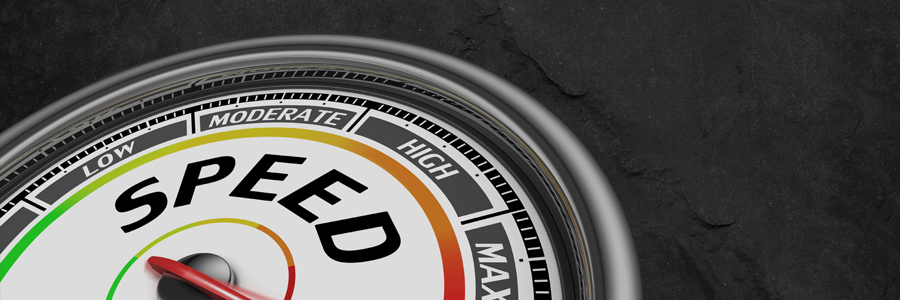
Did you know that if you have had the same Heating, Ventilation, and Air Conditioning (HVAC) system since 2006 your operational costs may have increase nearly 21%. Why? Because the U.S. Energy Information Administration estimates that the average retail price of electricity has increased from 10.40¢ per Kilowatt in 2006 to 12.55¢ per Kilowatt hour in 2016.1
So, how can you stay comfortable in your home and spend less on your cooling and heating costs? The answer may lie with a variable speed technology central heating and cooling system!
What is Variable Speed Technology?
Variable speed technology enables HVAC equipment to precisely adjust its output or capacity according to your home’s temperature demand. Unlike a single-speed or single-stage HVAC system that turns ON at 100% then OFF, equipment with variable speed technology may use less energy because it is designed with the option to operate at lower capacity levels.2
When an HVAC system has a variable speed compressor and/or fan motor, you may be able to spend less on utility costs without sacrificing your indoor comfort level.
Variable Speed Compressor Technology
Variable speed is often used to describe the type of compressor in your air conditioner or heat pump. The compressor is the heart of your air conditioning or heat pump system, creating the cooling capacity for your system.
This feature allows for various levels of output depending on your cooling demands — full capacity for very hot days (or cold days if running the heating mode of a heat pump) or reduced capacity for milder days. Variable speed compressors may allow a unit to run at virtually any speed between 30% and 100% to provide the most energy efficient method to meet the temperature on your thermostat or control system. It is a great energy-efficient option when compared to a single-speed unit.
Variable Speed Fan Motor Technology
Variable speed technology can also apply to the type of blower motor located in the air handler or gas furnace. A variable speed blower motor can operate at various speeds to precisely control the amount of airflow throughout your home. In the winter, a variable speed blower motor may alleviate the “cold air blow” you feel when a single speed furnaces or air handler begins turns on at 100%.
According to the Office of Energy Efficiency & Renewable Energy, a variable-speed motor running continuously at a half speed may use up to 75% less power that a single-stage motor uses to move the same amount of air.3
Variable Speed Eases Cycling
The electricity usage of a heating or cooling system typically peaks when a unit turns ON at 100%. A single-speed HVAC system turns ON at 100% capacity, then stays there until it reaches your preset indoor thermostat or control system temperature and then turns OFF.
Variable speed technology allows for a more consistent path to indoor comfort. It often reduces the number of start/stop cycles associated with single speed equipment which may reduce the potential peak draw on your home's electrical service needs. Once your HVAC system reaches the desired indoor temperature, the variable option precisely adjusts to the less demanding environment, minimizing the capacity required to maintain that temperature compared to a single-speed system. It’s like riding your bike uphill, then leveling off on a flat road to the finish line — it requires less demand than the hill-laden route.
Added Benefits of Variable Speed Technology
A variable speed system may run longer than your traditional HVAC system, but at a level that requires less energy. This slow and steady operation offers some additional comfort benefits when compared to a single speed unit.
- Consistency of Indoor Comfort – Variable speed technology may minimize the temperature swings often found with single-stage equipment. Rather than shutting down, the variable capacity prolongs the set temperature of your spaces. This allows for steady and consistent comfort in your home.
- Dehumidification – The longer a cooling system runs, the more moisture might be removed from the indoor air. This may improve the balance between temperature and humidity, providing you with more comfortable interior air.
- Filtering of Indoor Air – The extended run time at lower speeds allows more time for the indoor air to circulate and interact with filters or additional air quality system components. However, as with traditional systems, it is important to change out your filters according to your HVAC dealer or manufacturer’s recommendation.
If you are concerned about your rising utility bill but don’t want to sacrifice your indoor comfort, you may want to consider a heating and cooling with variable speed technology. Talk to your licensed professional HVAC dealer to see if a variable speed system is right for your home.

1 U.S. EIA. (2017, May). Monthly Energy Review, Average Retail Prices of Electricity. Retrieved from U.S. Energy Information Administration: https://www.eia.gov/totalenergy/data/monthly/pdf/sec9_11.pdf
2,3 Office of Energy Efficiency & Renewable Energy. (n.d.). Variable-speed, low-cost motor for residential HVAC systems. Retrieved May 1, 2017, from US Department of Energy: https://energy.gov/eere/amo/variable-speed-low-cost-motor-residential-hvac-systems